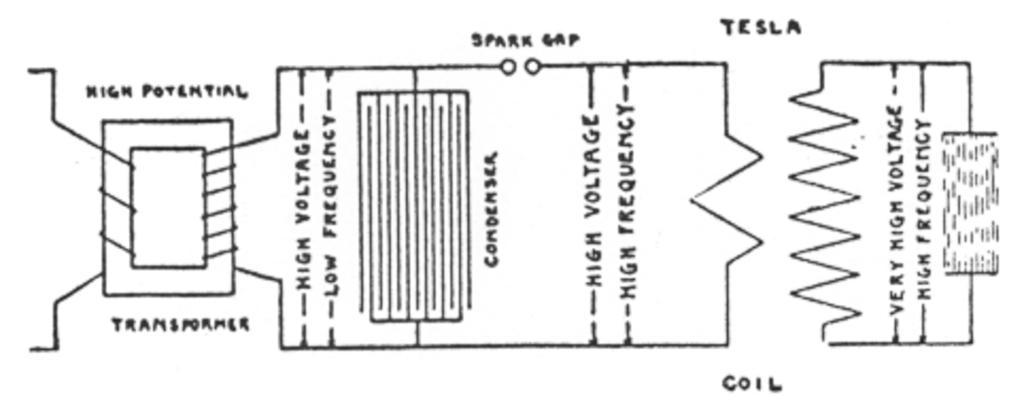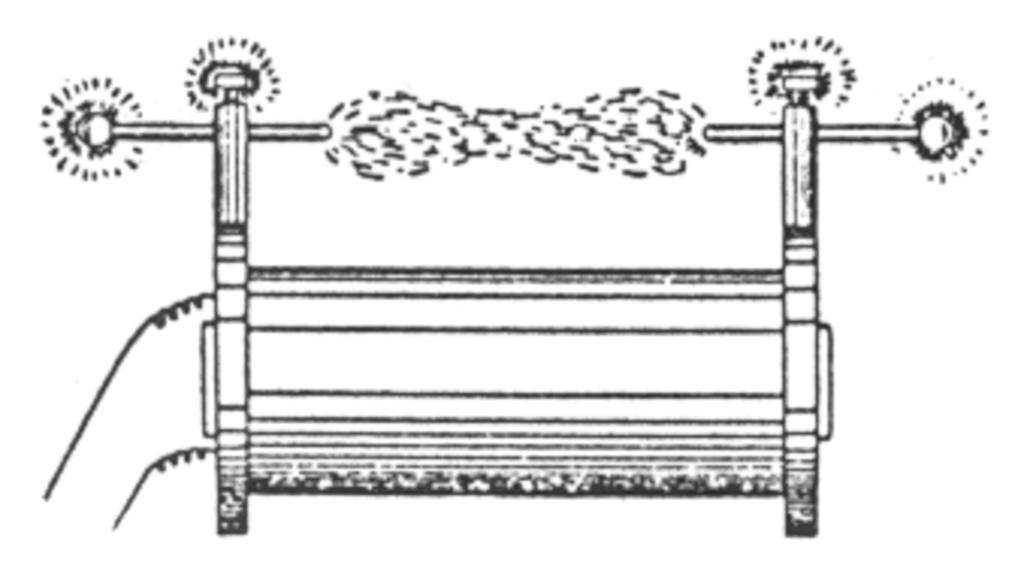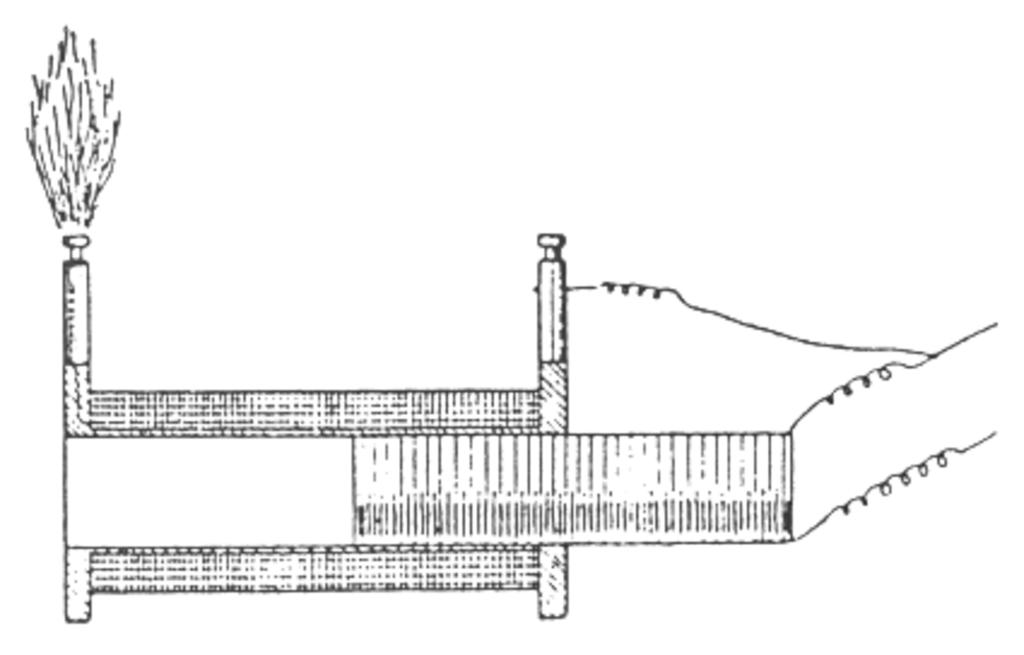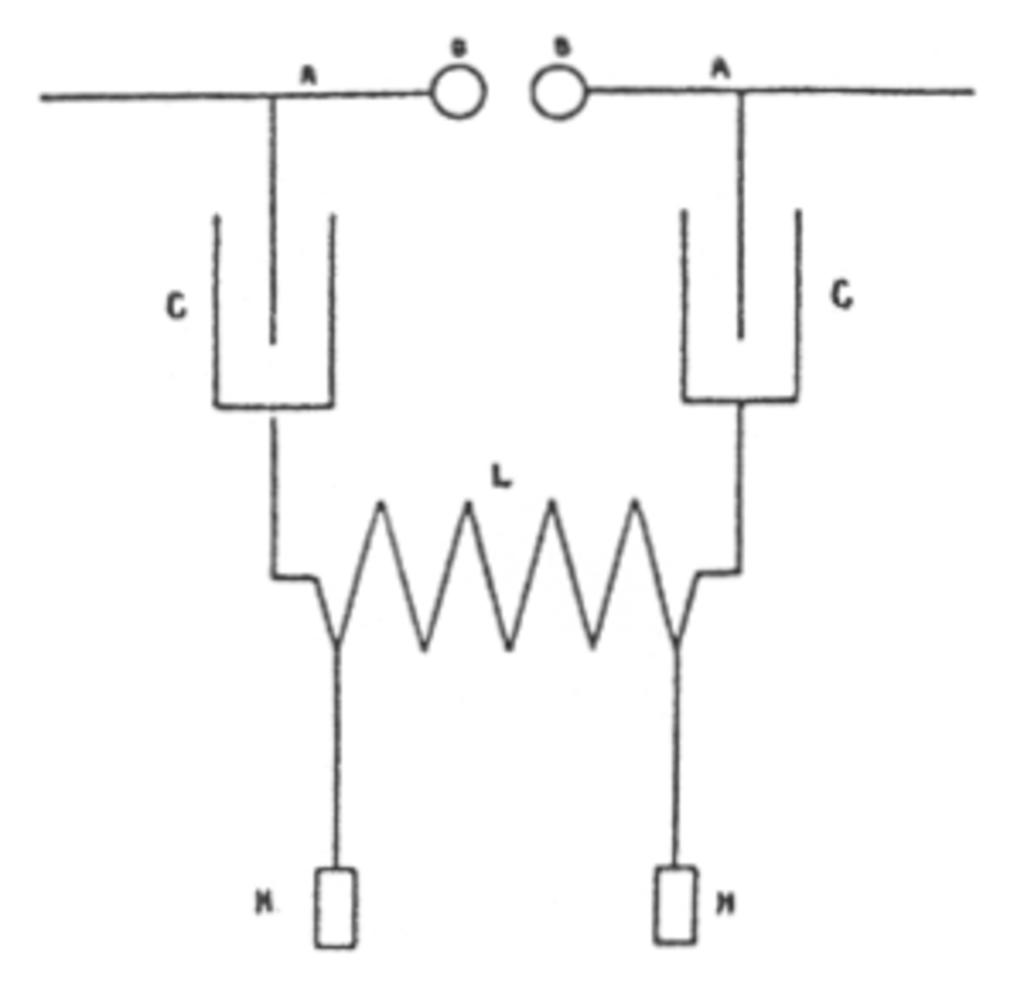TCBA Volume 4 - Issue 1
Page 5 of 18
The Oudin Coil
By
Eddie Kagle
There seems to be some confusion among Tesla coil enthusiasts regarding the differences between the Oudin and Tesla coil. This is due primarily to the fact that writers of both technical and popular literature have erroneously generalized all high frequency coils giving monopolar effects as an Oudin coil and those giving bipolar output credited to Tesla. The following is an attempt to clear up some of the ambiguity that has appeared in literature both past and present.
Researching Oudin has been somewhat more difficult than finding data on Tesla because very little has been written about Oudin in the English language publications. Evidently, Oudin was a medical practitioner as he is listed as Dr. Paul Oudin in French medical literature. His position in regard to priority in high frequency work is not immediately clear. Evidently, he was quite active in the early 1890's as his work appears to parallel that of D'Arsonval. In his book, “High Frequency Currents,” Frederick Finch Strong establishes some idea of chronological order in the development of high frequency medical technology when stating, “The wonderfully brilliant electrostatic effects obtained by Tesla with his alternating currents of High Frequency and High Potential led d'Arsonval and his colleagues to study them therapeutically.” Tesla's influence on the development of medical high frequency techniques is substantiated by none other than D'Arsonval himself. A letter credited to D'Arsonval, which appeared in the October 25, 1910 issue of “Archives d'Electricite Medical,” stated, “that it was not until Tesla, in the year 1891, gave to science a method to produce high frequency currents of great intensity that he (d'Arsonval) was able to introduce this modality successfully into therapeutics. All the former devices were inefficient in their output for auto-condensation or auto-conduction treatments.”
In 1891, Tesla presented the first of several lectures in which he demonstrated apparatus for the production of high voltages and high frequencies. His circuits employed air wound inductively-coupled tuned transformers (Figure 1). An early form of transformer with primary coil internally wound produced bipolar effects (Figure 2). From that time forth, high frequency bipolar coils have been associated with the name of Tesla. However, Tesla's experiments were quite varied and, in many instances, required apparatus with monopolar output (Figure 3). This fact seems to have been ignored by those who later wrote on the subject of high frequency transformers. It is particularly important to note that the monopolar effect was obtained simply by grounding one of the secondary terminals to a primary input line. And in subsequent writings, Tesla promoted earth grounding in attaining monopolar output.
While Tesla was not the first to notice the nonshocking peculiarity of high frequency currents, he was among those, if not the first, to suggest their use for the production of heat in medical treatment. “But with apparatus on a large scale, even a body of considerable bulk would be heated as, for instance, the body of a person; and I think that physicians might make observations of utility in such experiments....”(1)
In 1893, Professor D'Arsonval of Paris published a report of his experiments with high frequency currents obtained from the arrangement of Hertz. His spark oscillator employed a single helix energized by a Ruhmkorff (induction) coil (Figure 4). D'Arsonval later discarded this arrangement and adopted the inductive coupling technique of Tesla.
Shortly after D'Arsonval's announcements, Dr. Oudin conceived the idea of tapping a coil of fine wire onto the D'Arsonval helix (Figure 5). Like the D'Arsonval method, Oudin's arrangement was energized by either a static machine or Ruhmkorff coil. It became known as a “Resonator” because it could be tuned to resonance by adjusting the primary inductance. Oudin did not, at first employ grounding techniques in his circuitry.




